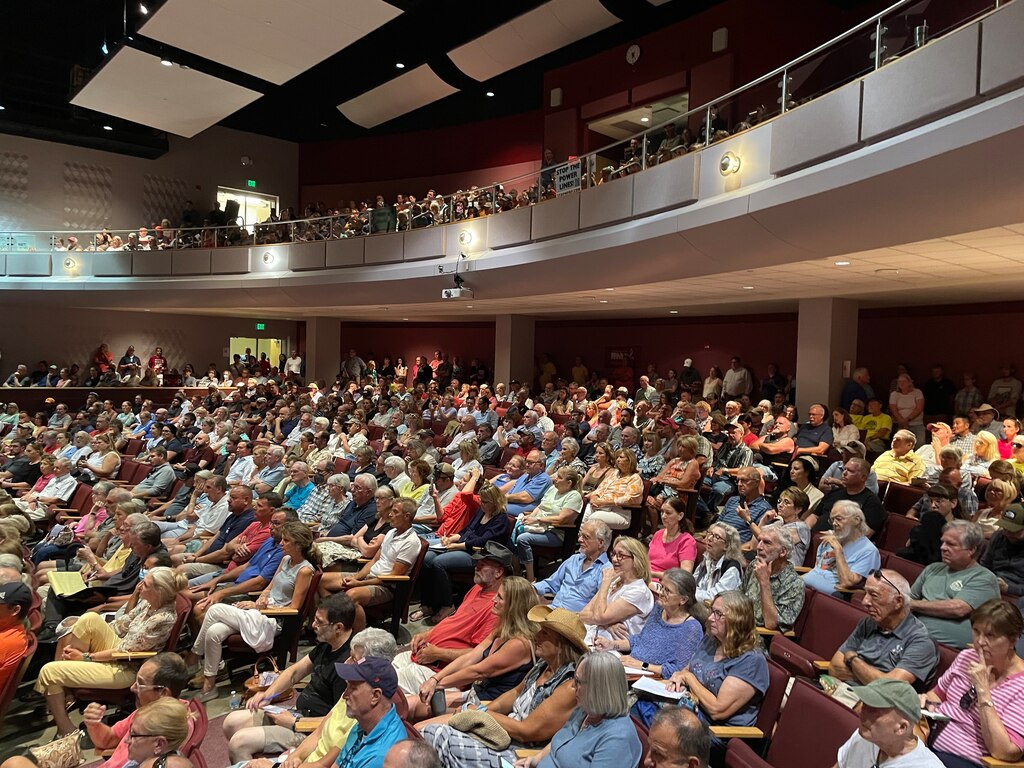Gov. Wes Moore on Friday evening voiced “grave concerns” about a controversial proposal to build 70 miles of overhead power lines that would cut across Carroll, Baltimore and Frederick counties.
In a statement posted to X, Moore said he will ask leaders of the New Jersey-based Public Service Enterprise Group (PSEG) and PJM Interconnection, which manages the power grid for Maryland and several other states, to meet with his office to “discuss serious reservations about how this process has been conducted thus far, and the type of engagement I expect with our communities.”
The Maryland Piedmont Reliability Project, which is expected to cost $424 million, would run through much of northern Maryland, from the upper edge of Gunpowder Falls State Park in Baltimore County through small towns like New Windsor and past farmland near Frederick. Instead of using existing transmission lines and infrastructure for the project, the company is hoping to build new lines that would cut through farmland, wineries and homes.
The proposal, which emerged last summer to the surprise of many residents and officials, brought hundreds out to packed community meetings to learn more and voice their concerns.
PSEG has argued that the project would provide power for regular utility use and data centers in Maryland and Virginia. The project could also lower utility rates for Maryland residents, according to the company. PSEG recently selected a route that it said should mitigate the concerns of residents.
But Moore seems, so far, unconvinced that this is the right approach.
Read More
“To be clear: we need sustainable and cost-effective infrastructure to ensure the reliability of our grid and build the economy of the future in our state,” he wrote in his statement. “But the approach must be one that puts people first.”
The governor cited the “lack of community involvement in the planning process, and the lack of effective communication about the impacts of this project,” as two elements that concerned him.
Moore’s statement came just hours after the Chesapeake Bay Foundation released an analysis claiming that the project could threaten “over 500 acres of protected land, including vulnerable forest and high-quality watersheds.”
According to the study by the conservation organization, the transmission line’s right of way is expected to cut through 514 acres of protected area, 483 acres of Tier II watershed, 377 acres of forest cover, 47 acres of wetland and 125 acres of riparian buffer, or vegetation surrounding streams and water bodies that improves water quality and environmental benefits.
The construction has not started, as the project is still in its approval phase. PSEG plans to submit an application to the Maryland Public Service Commission by the end of the year or in early 2025.
The project has broken through partisan splits and has been unpopular across the political spectrum. Earlier this fall, a bipartisan group of legislators wrote a letter to Maryland’s power grid operator to demand more transparency about the plan and ask PJM Interconnection why it cannot use existing lines and infrastructure for the project.
Additionally, the Baltimore County Council last month unanimously approved a resolution opposing the power line project.
“You know going through preserved land is going to take away the potential to produce food for this area in the future,” Councilman Wade Kach said last month. “Baltimore County has some of the largest areas of prime productive soil.”



Comments
Welcome to The Banner's subscriber-only commenting community. Please review our community guidelines.